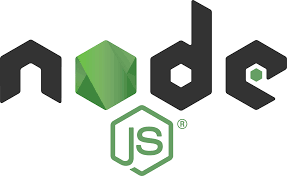Node.js and Express have become the go-to tools for building fast, scalable web servers and APIs. If you’re new to backend development or want to learn how to create a simple server from scratch, this guide will walk you through the process step-by-step. By the end, you’ll have a running Express server that handles basic routes and serves responses.
What Is Node.js and Express?
Node.js is a JavaScript runtime that allows you to run JavaScript code outside the browser, on your computer or server. It’s built on Chrome’s V8 engine and is event-driven, making it ideal for building efficient network applications.
Express is a minimalist web framework built on top of Node.js. It simplifies building web servers by providing helpful methods to define routes, handle requests, and manage middleware.
Step 1: Install Node.js
Before starting, ensure Node.js is installed on your machine.
- Go to nodejs.org and download the latest LTS (Long Term Support) version for your OS.
- After installation, open a terminal or command prompt and check the installation by running:
node -v
npm -v
These commands display the installed Node.js and npm (Node Package Manager) versions.
Step 2: Initialize a New Project
Create a folder for your project and initialize it as a Node.js project:
mkdir my-express-server
cd my-express-server
npm init -y
The npm init -y command creates a default package.json file that manages your project’s dependencies and metadata.
Step 3: Install Express
Install Express using npm:
npm install express
This downloads and saves Express in your project’s node_modules folder and updates package.json.
Step 4: Create the Server File
Create a new file named index.js in your project folder. This file will hold the server code.
Step 5: Write the Express Server Code
Open index.js in your favorite text editor and add the following code:
const express = require('express');
const app = express();
const PORT = 3000;
// Define a basic route
app.get('/', (req, res) => {
res.send('Hello, world! This is my first Express server.');
});
// Define another route
app.get('/about', (req, res) => {
res.send('This is the about page.');
});
// Start the server
app.listen(PORT, () => {
console.log(`Server is running on http://localhost:${PORT}`);
});
Explanation:
- We import Express and create an instance called
app. - We define routes with
app.get(). The first parameter is the URL path, the second is a callback function with request and response objects. - The server listens on port 3000, and when it starts, it logs a message.
Step 6: Run the Server
Go back to your terminal and run:
bashCopyEditnode index.js
You should see the message:Server is running on http://localhost:3000
Open your browser and visit http://localhost:3000 — you’ll see “Hello, world! This is my first Express server.” Visit http://localhost:3000/about to see the about page message.
Step 7: Add JSON Response and Middleware
Express can also send JSON data and use middleware to handle requests.
Update your index.js like this:
app.use(express.json()); // Middleware to parse JSON bodies
app.post('/data', (req, res) => {
const userData = req.body;
res.json({
message: 'Data received successfully!',
yourData: userData
});
});
Now, your server can accept POST requests with JSON data at /data. You can test this with tools like Postman or curl.
Step 8: Handling 404 Errors
Add a fallback route at the bottom of your index.js file to handle requests to unknown routes:
app.use((req, res) => {
res.status(404).send('404: Page Not Found');
});
Step 9: Using Nodemon for Development
Instead of restarting the server manually after every change, you can use nodemon.
Install nodemon globally:
npm install -g nodemon
Run your server with nodemon:
nodemon index.js
Now, the server will auto-restart on file changes.
Conclusion
You’ve now built a basic Node.js server using Express that serves routes, handles JSON, and manages errors. This foundation lets you build more complex applications like REST APIs, web apps, or real-time services.
From here, consider learning about:
- Routing parameters and query strings
- Middleware for authentication and logging
- Connecting to databases like MongoDB or MySQL
- Deploying your server online with services like Heroku or Vercel
Node.js and Express offer incredible flexibility and speed for backend development — with this guide, you’re off to a great start.
